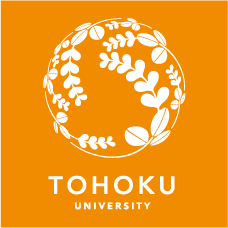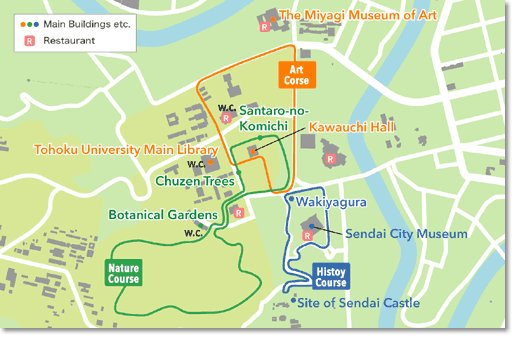Nature of Kawauchi
The Kawauchi area is located on a fluvial terrace that was formed by the Hirose River. It consists of a flat terrace plain, where the Kawauchi Campus is situated, and a steep hilly area home to Sendai Castle and Tohoku University Botanical Gardens. To the west of Kawauchi lie the Ou Mountains; to the east, the Sendai Plain stretches out beyond the Hirose River.
To the south lies Tatsunokuchi Gorge, which, with a depth of 60 m, has earned an illustrious reputation as the “Grand Canyon of Sendai.” The hilly area where Sendai Castle and the Botanical Gardens are located, known since ancient times as “Aobayama,” is dotted with steep escarpments and failed slopes dissected by numerous mountain streams. Tatsunokuchi Gorge offers visitors a glimpse of strata formed around four million years ago, which contain an array of floral and faunal fossils.
These highly diverse, complex landforms give Kawauchi a rich natural beauty.
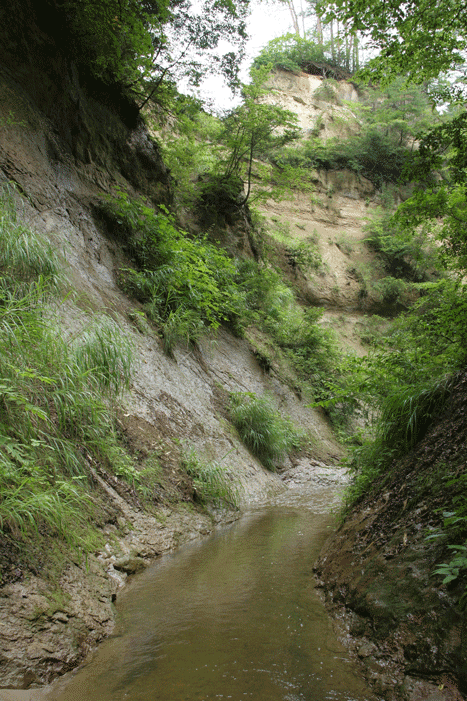
Strata of Tatsunokuchi Gorge
Visitors can view strata formed around four million years ago, along with fossiliferous shells and lignite embedded inside the rock.
(Photo by Jun Nemoto, courtesy of the Tohoku University Museum)
Kawauchi Campus: Part of the Green Zone on Sendai’s Outer Edge
During the period of domain duties, the Ninomaru (secondary citadel) of Sendai Castle was situated in the Kawauchi area, and Aobayama was a mountain forest that stretched from the Oura-yama area of Sendai Castle (now Tohoku University Botanical Gardens) to the Ou Mountains.
Today, the area continues to play a valuable role as a green zone for Sendai, City of Trees, adjoining the urban district, which is now integrated with the Hirose River and Aobayama.
The surrounding area is also home to several cultural centers, including the Miyagi Museum of Art, Sendai City Museum, and Sendai International Center, and is a recommended area for walking courses.
Tohoku University Botanical Gardens (Natural Monument "Aobayama") [Kawauchi Campus ~ Aobayama East Campus]
The Natural Monument of “Aobayama” (Tohoku University Botanical Gardens) is the most naturally endowed area of Kawauchi.
This area is the location of Sendai Castle’s Oura-bayashi Forest, and since the land has remained largely untouched since the castle was constructed some 400 years ago, it is covered with almost virgin forests consisting predominantly of Japanese fir (Abies firma), which grows naturally on the hilly slopes of Sendai. It is extremely rare for such forests to exist in urban neighborhoods, making Aobayama a fitting symbol of Sendai, City of Trees.
The botanical garden was also the first of its kind in Japan to be designed as a National Natural Monument. The facility is open to the public—abundant nature accessible to all.
Click for Details : Nature of Aobayama - Plant -
Click for Details : Nature of Aobayama - Animal -
( entrance: Campus Map C 31 Botanical Gardens Garden Hall )
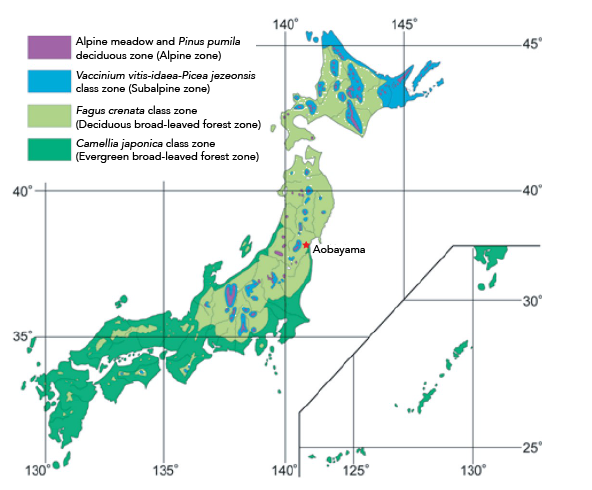
Map of Potential Natural Vegetation on the Islands of Japan
(Adapted from Nihon no Shokusei [Vegetation of Japan] by Akira Miyawaki, 1972)
On the cusp of an evergreen broad-leaved forest zone and a deciduous broad-leaved forest zone, Aobayama is a diverse forest whose tree layer consists of species such as Japanese fir (Abies firma), Japanese red pine, Japanese beech, konara oak (Quercus serrata), and evergreen oak.
(Click to enlarge the image)
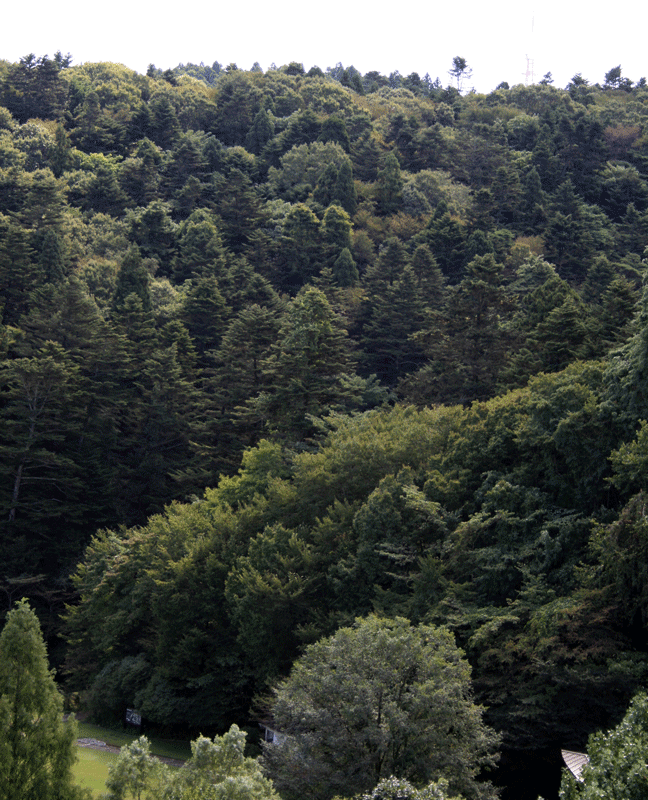
Forest of Japanese fir in Aobayama
Many giant trees of more than 200 years grow here.
Kawauchi Plaza [Kawauchi North Campus]
The Kawauchi North Campus is mainly for our freshmen and sophomore students. During breaks, the Kawauchi Plaza bustles with students.
The Plaza is open space at the heart of campus, where various club activities, circle exhibitions, and events take place during the University Festival in fall.
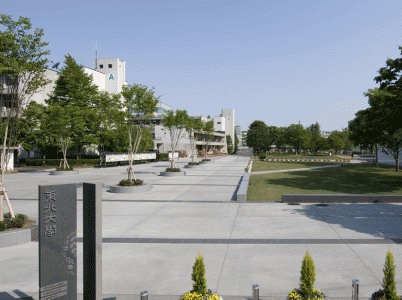
Nakazen Namiki (Rows of cherry tree) [Kawauchi South Campus]
The street between Kawauchi Hagi Hall and the University Library is lined with cherry trees, which make for a beautiful sight in spring. Every year, you can see students and teachers - as well as families - enjoying themselves under these trees.
The trees were born from bonds between students and a teacher.
( Campus Map : "Nakazen Namiki" is located between C area and D area. )
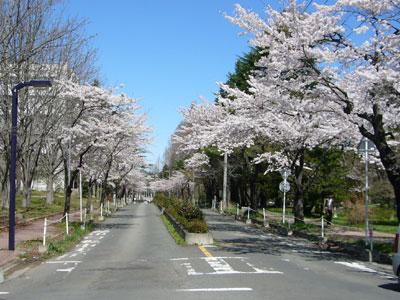
Senganzawa Stream
A stream that flows through the center of campus into the Hirose River. Lush vegetation brings color to the campus.
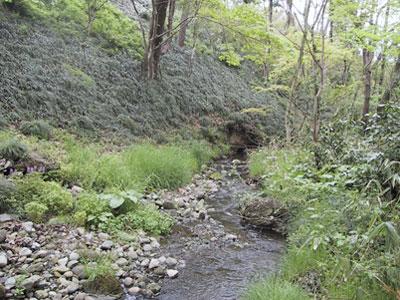
Green:preservation tree, memorial tree Light Green:open space
